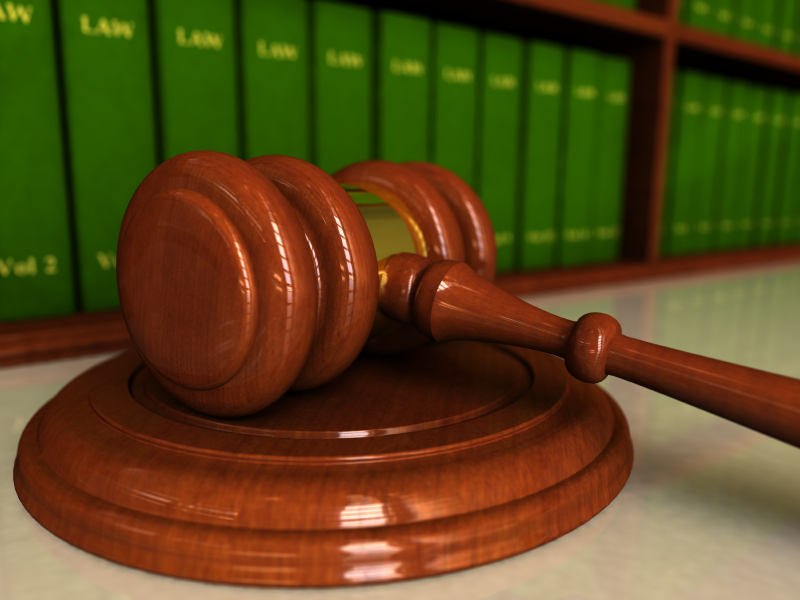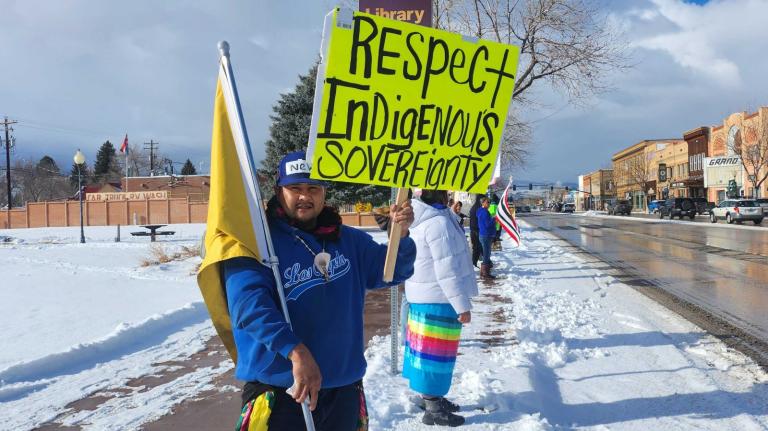With all attention focused elsewhere, a key federal court handed climate and clean energy advocates a major surprise victory yesterday. In the case, State of Connecticut v. American Electric Power Co. [pdf], the Second Circuit Court of Appeals ruled that a group of eight states, three land trusts and New York City could sue some of the country’s biggest producers of global warming pollution and force them to clean up their acts. This decision will likely spur a flood of follow-on court cases and will create increased pressure from corporate boardrooms for the Senate to finally act on climate change. This case is likely the most important ruling on the subject since the Supreme Court’s decided over two years ago that global warming pollution was air pollution in Massachusetts v. EPA. This decision should remind us of the critical role that the judiciary has played in driving all of the major social change movements in the past century.
Another Party Heard From
Why the surprise? In recent months, the challenges of winning Senate approval for clean energy legislation and reviving the apparently stalled international negotiations leading up to the Copenhagen conference have completely dominated the bandwidth for activists and observers, with only a few brain cells left even for EPA’s efforts to establish the first rules ever for global warming pollution. It is not surprising, then, that yesterday’s decision by federal appeals court has mostly flown under the radar, getting attention only from the kind of legal wonks that delight in the complicated intricacies of the federal Clean Air Act.
No one can accuse the courts of acting in haste, and part of the surprise came from the length of time that the case has been pending. Connecticutt v. EPA was first filed five years ago, in 2004, and was argued in the appeals court three years ago after a district judge had ruled in favor of the polluters. Interestingly, one of the three original judges on the panel that heard the case was Judge Sonia Sotomayor before she was tapped for the top court. Some insiders speculated at the time of her confirmation that this decision may have been delayed to avoid having it become an issue in her Senate hearings.
Making a Nuisance of Themselves
In brief, the states and their allies claimed that putting large amounts of global warming pollution into the atmosphere was a public nuisance, and that the courts needed to require the polluters to control their emissions. The case targeted five of the nation’s biggest greenhouse gas polluters and coal power generators: AEP, the Southern Company, TVA, XCEL and Cinergy. Collectively, these companies are responsible for about a quarter of the coal plant emissions in the country and a tenth of the total greenhouse gases.
So what’s a nuisance? Long before we had environmental statutes like the federal Clean Air or Clean Water acts, courts have recognized a common law right to protection from pollution that harmed the property or health of neighbors. As it is sometimes explained in law school, “your right to swing your arm ends where my nose begins.” Over the years, nuisance law has been used for cases like acute smells from hog farms, fish kills in rivers or toxic clouds from the steel mills. Importantly, courts have decided that the federal common law right to sue for a nuisance goes away if Congress adopts a statute that defines protections in the same area. This was a major reason that the federal Clean Air and Clean Water Acts were passed in the early 1970s — major companies were getting increasingly concerned about their exposure to nuisance complaints and lobbied Congress and the Nixon Administration to adopt an overall framework that would “occupy the field.” In general, the one thing that corporations hate worse than government mandates is uncertainty and exposure to liability at the whims the court system and juries.
Is It a “Political Question” When Congress Is Silent?
The main argument that the utilities have used in convincing court to throw out climate change cases is that curbing global warming is a “political question” that should be decided by the legislature or the executive, not the judiciary. They argued, for example, that the international climate negotiations make this a subject that only Congress and the President can deal with under the Constitutional provisions defining the authority to enter into treaties. The court dismissed this argument, noting that the states were only asking it to limit emissions from six power plants that were spewing massive amounts of global warming pollution into the atmosphere. It also rejected claims that the factual issues were too complex. The court cited complicated disputes between states over cross-border pollution going back over a century that have been successfully resolved under nuisance law. The court also rejected arguments that the states and allies lacked “standing” to bring these claims. It recognized that the impacts of global warming were clearly affecting health, property and environment in the states and ruled that they had a right to protect its citizens in court.
The court concluded by paraphrasing the leading Supreme Court case allowing states to sue for cross-border water pollution: “‘It may happen that new federal laws and new federal regulations may in time pre-empt the field of federal common law of nuisance. But until that comes to pass, federal courts will be empowered to appraise the equities of the suits alleging creation of a public nuisance’ by greenhouse gases.” (emphasis added).
What’s Next?
Because the case had been dismissed by the lower court, the appeals court kicked it back down for a full trial to determine the extent of the harm and the remedy — including potential controls for the power plants. Most observers think that an appeal to the Supreme Court is nearly certain — putting the case back on Justice Sotomayor’s desk. Although many will try to dismiss the Second Circuit as left-leaning, it is worth noting that the two judges who decided the case were both Republicans appointed by the two Presidents Bush.
The other main expected legal repercussion is opening the flood gates to other nuisance and common law cases arguing for controls on major global warming polluters or monetary damages. One case that observers are watching closely involves the Village of Kivalina in Alaska. This suit pits a small native village which had to be relocated due to sea level rise and erosion against corporate giants like Exxon-Mobil. The lead plaintiffs attorneys include Seattle’s famed trial lawyer Steve Berman (who lead a team of states on the tobacco claims) and Matt Pawa, who represented the land trusts in yesterday’s AEP case. Following the strategy used in tobacco and asbestos cases, the Kivalina plaintiffs are arguing that fossil fuel corporations and trade associations engaged in a massive conspiracy to hide the facts on global warming and “greenwash” their images. One conservative advocacy group has called this “the most dangerous litigation in America.”
More than One Way Home
As NRDC’s superlawyer David Doniger points out, yesterday’s decision is an important reminder that there are three branches of government and three routes for the nation to get control of global warming pollution: congressional legislation, rulemaking by the executive under the clean air act, and judicial action. We strongly agree with David that the best route is comprehensive congressional action on clean energy and climate. This prospect has finally been teed up by the House’s approval of the American Clean Energy and Security Act in June. The Senate needs to step up and pass an even stronger bill that President Obama can take to Copenhagen. But the EPA’s decision to move forward with rules under the Clean Air Act (itself prompted by the Supreme Court’s direction to get moving in Massachusetts v EPA) and yesterday’s ruling both show that we don’t have to despair in the face of potential filibusters and congressional delay tactics. The question is no longer if we are going to control global warming pollution — it is how and when. And just as the common law nuisance cases fueled demand from board rooms for comprehensive air and water legislation in the 1970s, it is virtually certain that this decision will help bring reluctant corporations to the congressional table.
I’ll give the final word to Matt Pawa, the attorney who helped develop the winning legal strategy:
The court’s decision makes clear that the harms of global warming are real and need to be addressed today. For hundreds of years, courts have been there to protect citizens from harm. Today’s decision opens the way for citizens to protect themselves from the polluters responsible for global warming. Power companies that release millions of tons of dangerous carbon pollution are not above the law.


